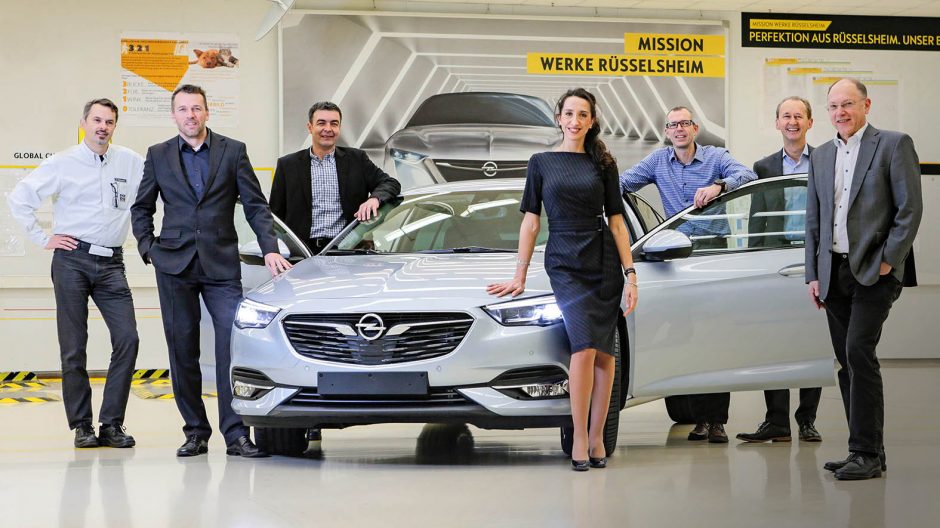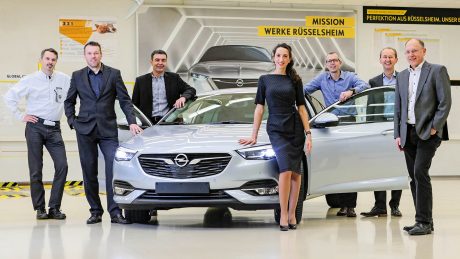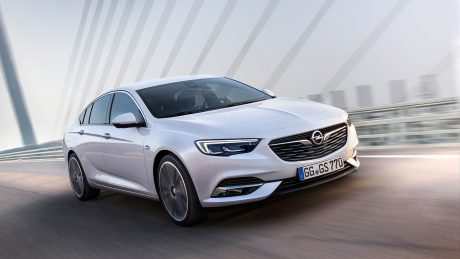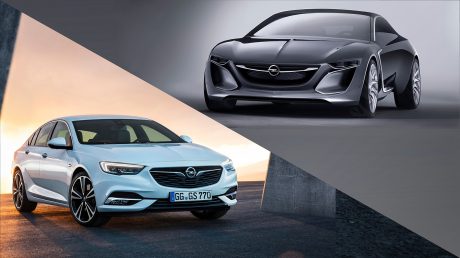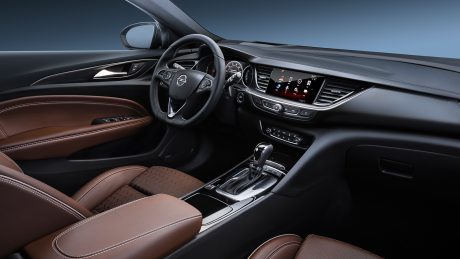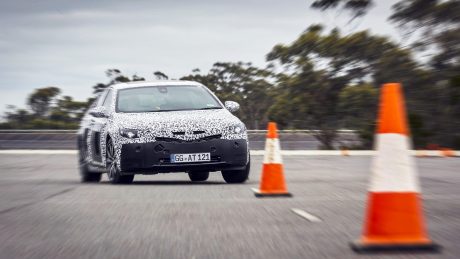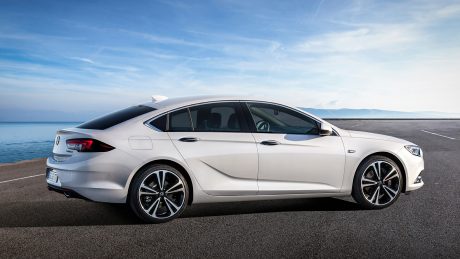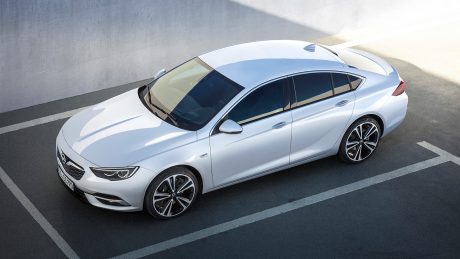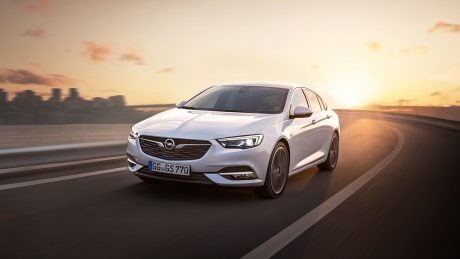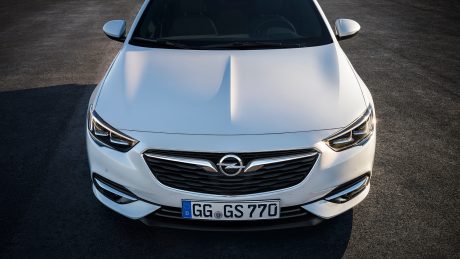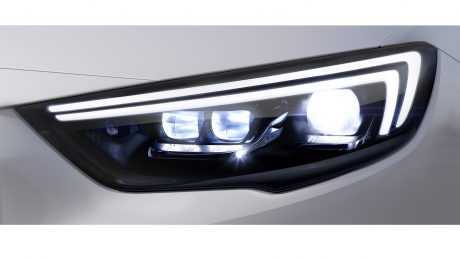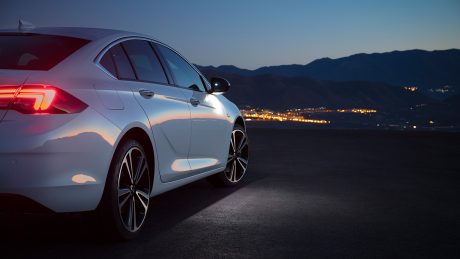––––––
“We’re putting a car into production that we’re really proud of and happy with.”
– Chief Engineer Andreas Zipser –
In the clinical atmosphere of the audit room in Rüsselsheim, Germany, vehicles are usually subjected to a Customer Audit immediately after they leave the production line. Incidentally, each GM production facility has such a room, and they are all designed in the same way. The car’s paint is examined and all of the electrical operations are tested, as is the mounting of the components. Today, though, a special photo shoot is being held here for Opel Post under the 1,100 lux standardized lighting. The stars of the shoot on this December morning are Chief Engineer Andreas Zipser and his core team, all of them experts in technology, development, production, timing, quality, and costs. And, of course, the flagship project that the team has poured six years’ worth of work into is here as well: the new Insignia Grand Sport (in a pilot series version). The path leading up to this moment has been “long and full of obstacles,” for both Zipser’s team and the vehicle, says the Chief Engineer. “But it was worth it, since now we’re putting a car into production that we’re really proud of and happy with.”
The Faces Behind the New Flagship
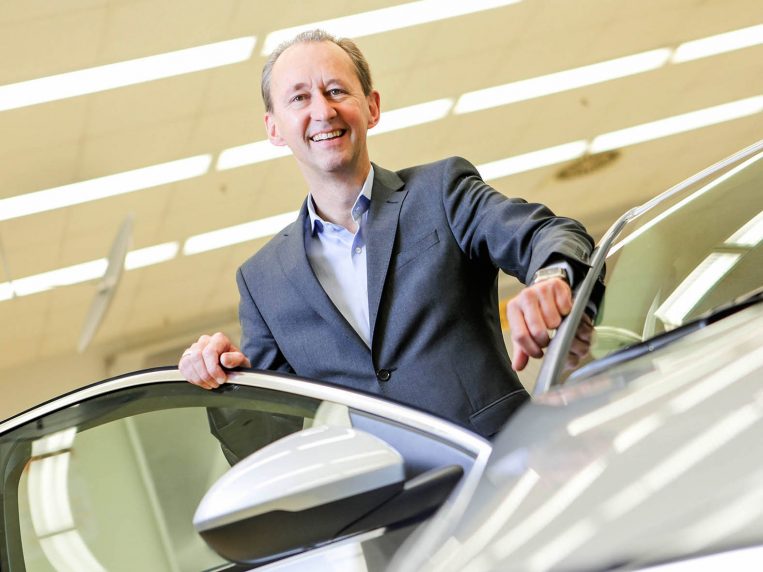
Andreas Zipser
Chief Engineer
Andreas Zipser (53) – who already served as the Chief Engineer for the Corsa E – is responsible for the Insignia Grand Sport project as well as the various versions of that Opel model, such as the Sports Tourer. The first release of the Insignia has already been groundbreaking, says the Chief Developer. “The first Insignia motivated Opel to forge new and radical paths. We followed that principle to try to top that first model; for instance, we developed completely new architecture.” Zipser’s personal wow experience starts with getting into the car. The pilot is now sitting three centimeters lower in the car. “We wanted to fully integrate the driver and provide him with a position that can almost be matched with that in a racing car.” Zipser’s opinion on the market potential of the new model? Opel ist on the right path when it comes to development. “And that’s because we want to put cars out on the streets that not only offer innovative functions, but also, above all, make people really feel things again and have fun when they drive.” The Insignia Grand Sport will be leading the charge – as a true flagship model should.
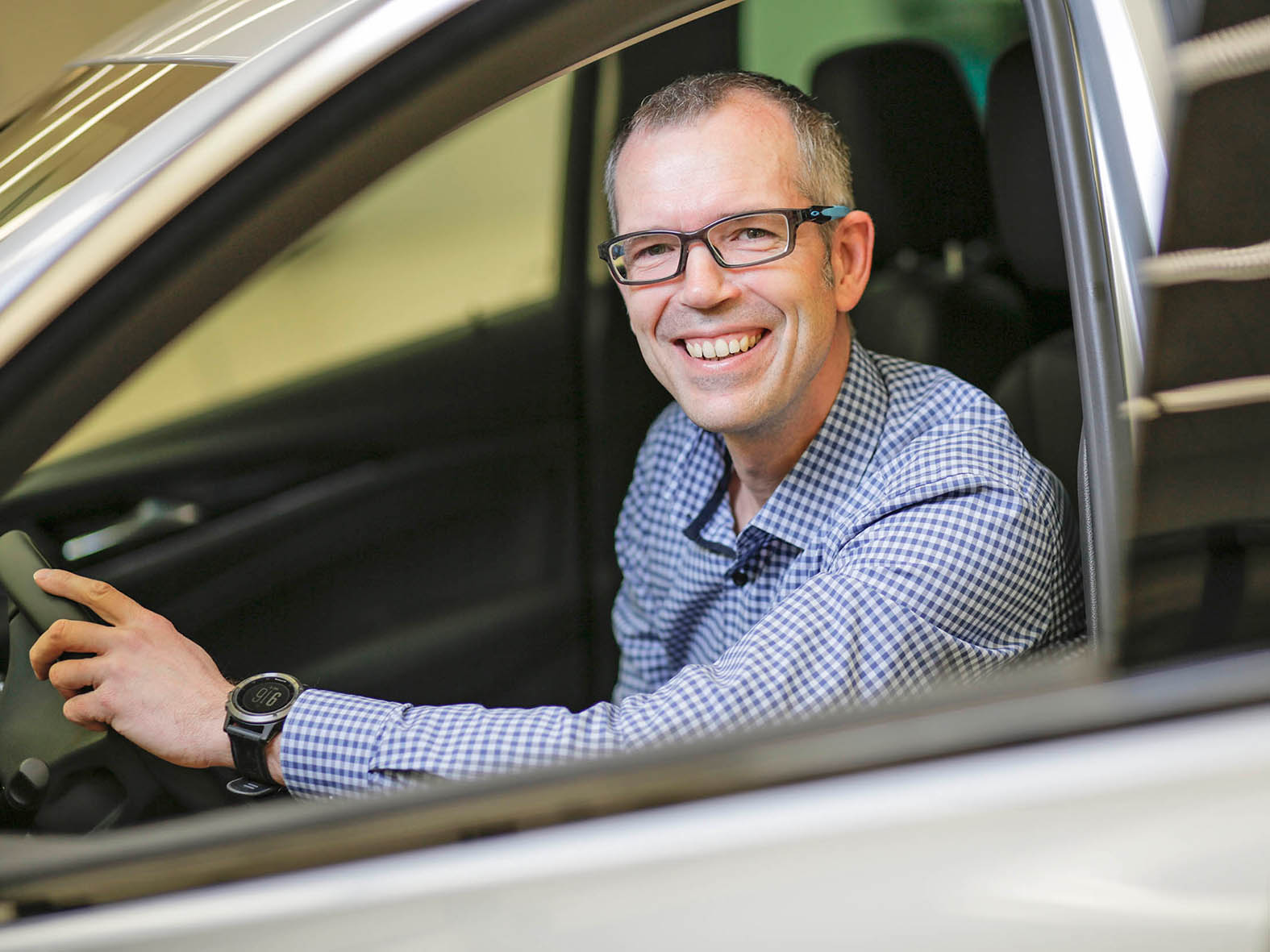
Thomas Lipp
Engineering Manager
Insignia Grand Sport
Thomas Lipp (47) is in charge of cost planning and the interplay between technical elements. This includes considerations such as long-term vehicle durability and the usage of space and switches in the interior. He has been supervising the project known internally as E2 since day one, back in the fall of 2011. In terms of the vehicle’s technological features, he’s impressed by a special feature on the all-wheel drive versions: In place of a braking intervention, the engine torque is distributed across specific wheels through so-called torque vectoring, whereby the force is not distributed by a conventional rear axle differential – but across two electro-hydraulically controlled multi-plate clutches. “That improves the driving dynamics,” says Lipp.
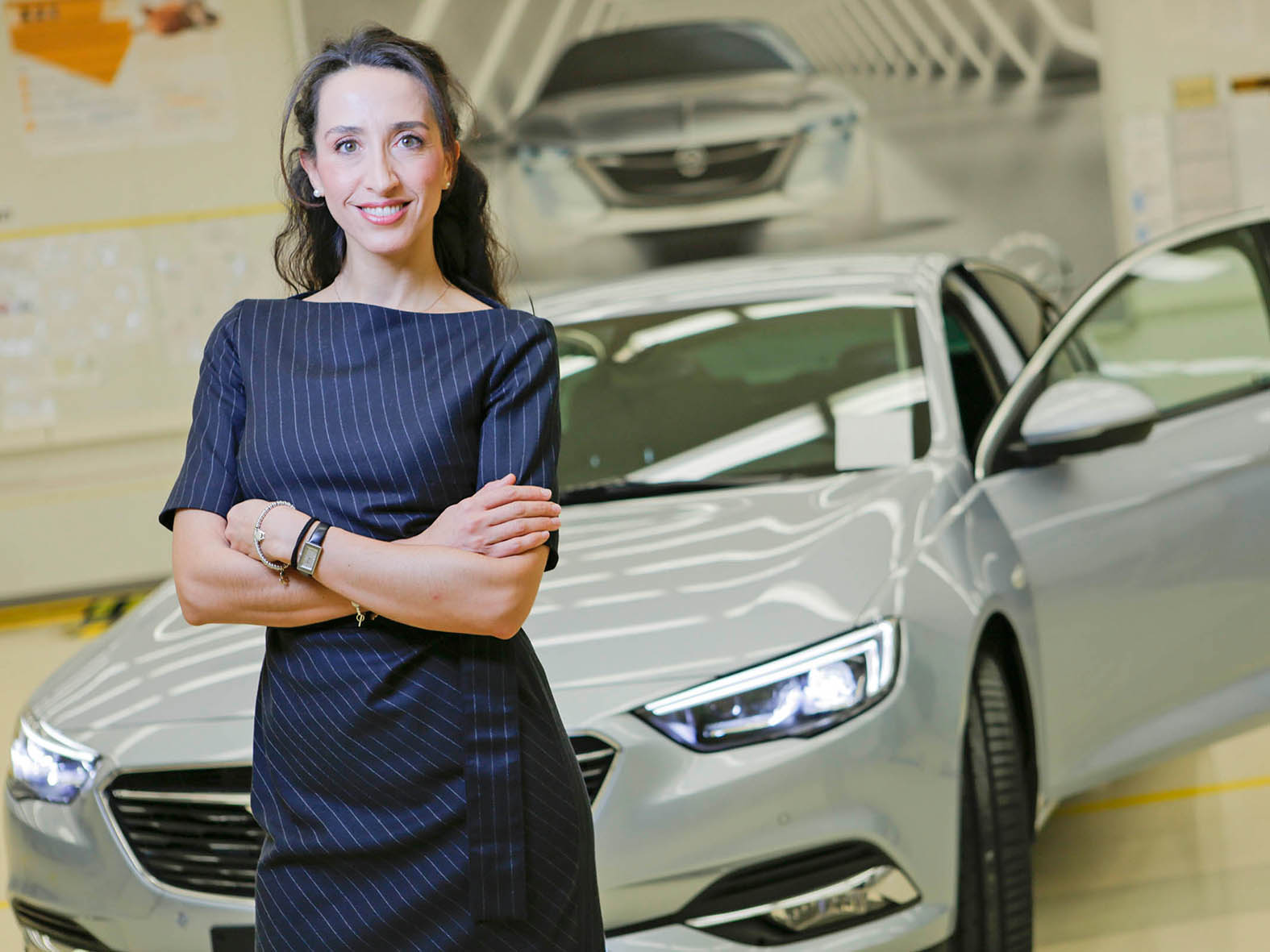
Chiara Sardone
Engineering Manager
Insignia Sports Tourer
Chiara Sardone (38) is Thomas Lipp’s counterpart for the station wagon version of the model. “In other words, my work begins from the Sports Tourer’s B-column.” She still can’t discuss details, but she can promise that there will be even more sophisticated lines for the rear, even more room in the trunk, plus practical solutions “that we haven’t had in the portfolio yet.” Apart from all of those new features, her favorite thing about the vehicle is the 360 degree surround vision system for the driver that includes cameras on the side view mirrors as well as one at the front and one at the back.
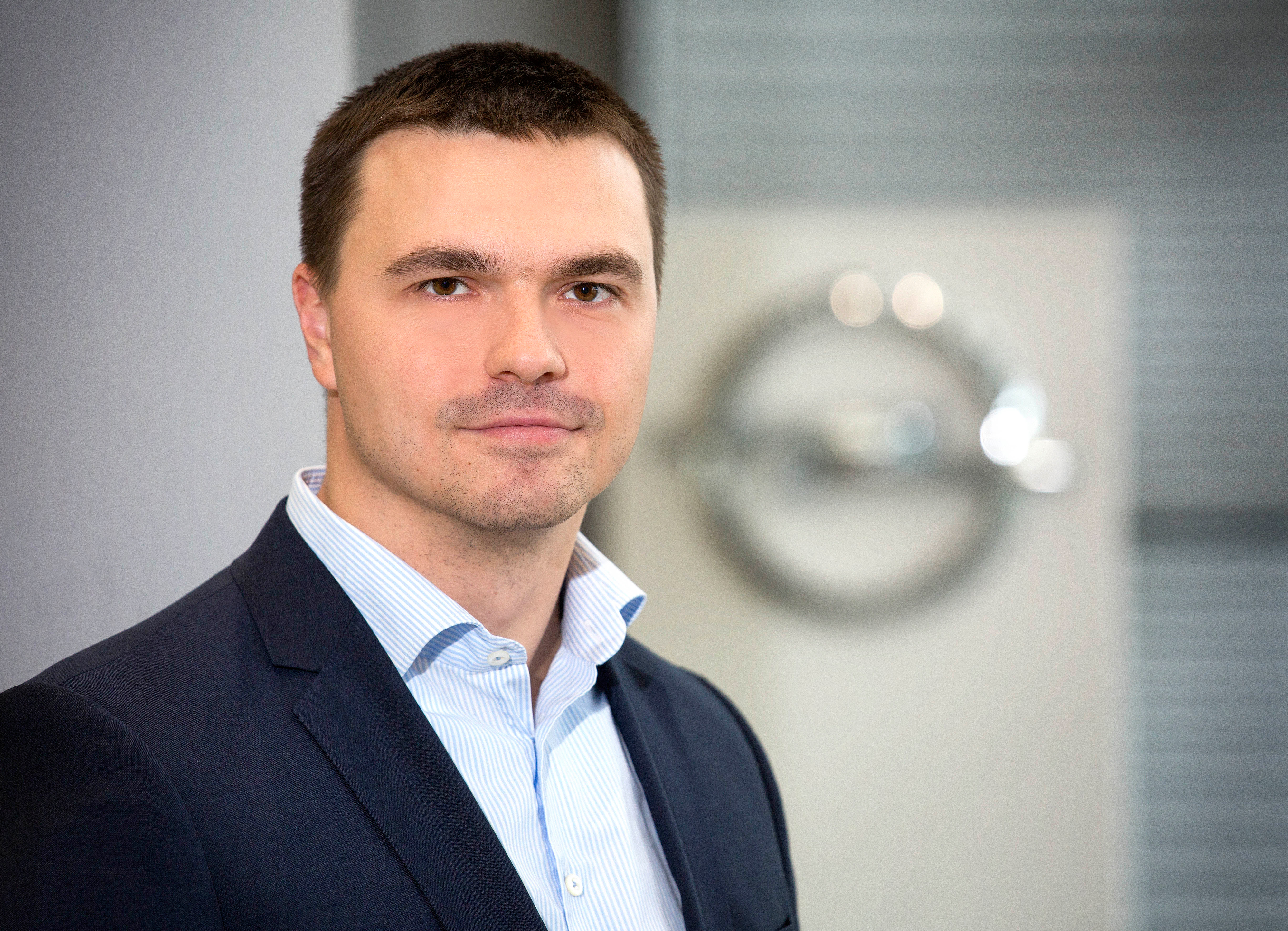
Sergey Korolev
Chief Financial Officer (CFO)
“I’m just the bookkeeper,” says Sergey Korolev (34) with a grin. Far from a mere administrator, he’s the master number cruncher for the E2 project. He manages the total expenditure and ensures profitability. This involves having a say in the budget allocation for the individual phases of the project. Korolev provides intermediate results and prognoses as well as answers to questions such as ‘What material do we need?’ ‘How much does it cost?’ and ‘Can we fulfill this demand internally, or do we need to turn to external suppliers?’ When it comes to the Insignia Grand Sport, Korolev appreciates “the pleasantly low level of background noise while driving – not even a powerful diesel
engine detracts from that.”

Jérôme Bailleul
Product & Pricing Manager
Jérôme Bailleul (41) works closely together with Korolev on the financial side of things. He deals with purchase prices and potential residual values. His job is divided into three fields: “Firstly, I serve as the voice of the customer in our team. Secondly, I observe markets and trends, and thirdly, I am responsible for ensuring that all of the versions of our car have the right features and extras later on – and that everything goes well in aftersales.” When it comes to the Insignia Grand Sport, he particularly appreciates the fact that “the driver needs to do less to control the vehicle, and the head-up display provides them with a great deal of support.” This display includes information about speed, traffic signs, cruise control, and navigation on the windshield, directly in the driver’s field of view. This means that the driver can always keep their eyes on the road.
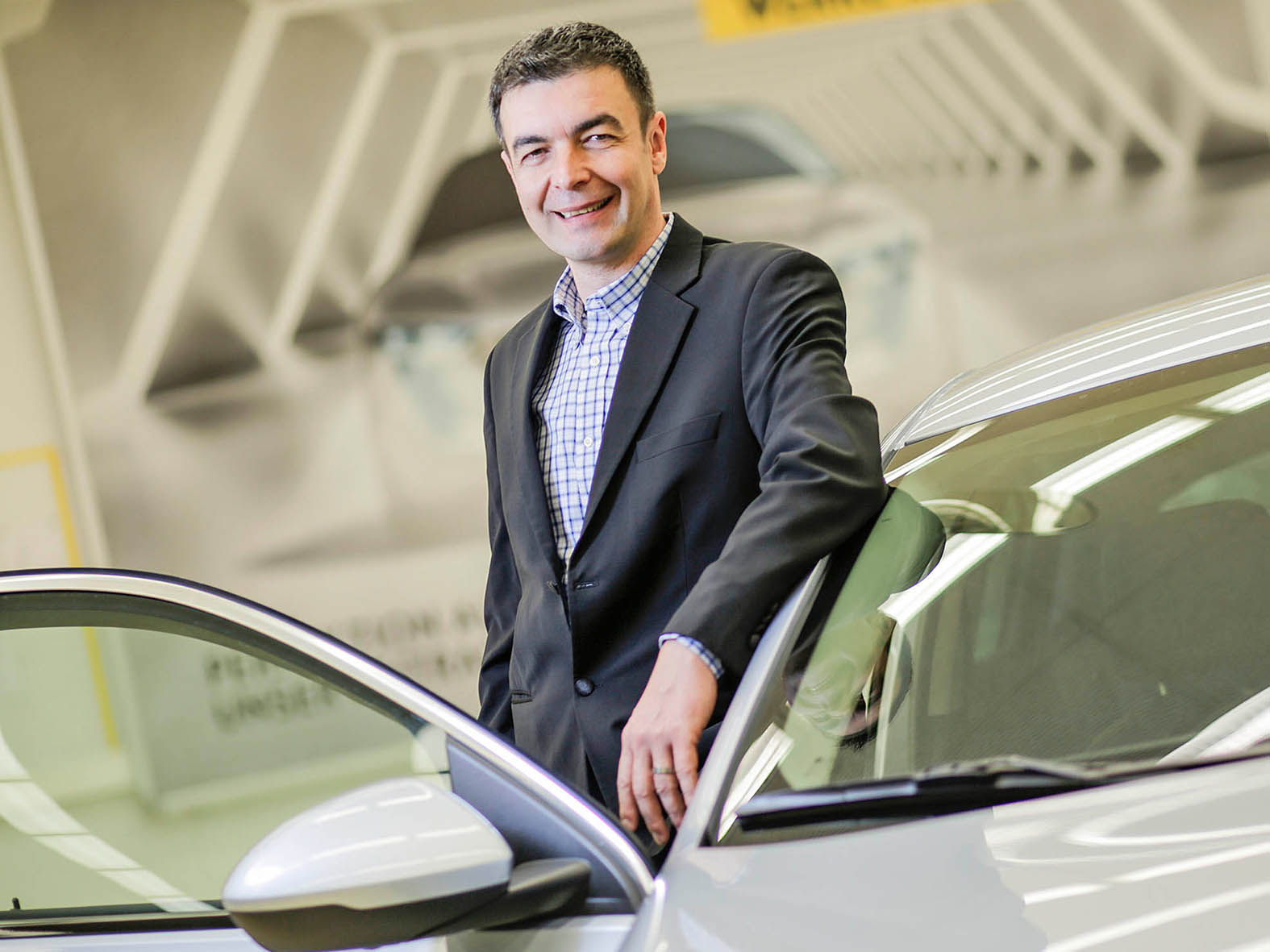
Ralf Grenz
Manufacturing Chief Engineer
Ralf Grenz (46) acts as the interface between the employees who develop the car and those who build it later on. He needs to know what is required (and in what volumes) for the pressing plant, chassis plant, paint shop, and manufacturing and final assembly unit. Requirements could include new tools for sheet metal to make side body panels, or the construction of a surface for new plants that corresponds to two soccer fields (around 15,000 square meters) in size. “Having a certain diplomatic touch makes the job easier,” says Grenz. Prior to holding this position, the mechanical engineer spent three years in Detroit helping shape the global GM architecture, which influences models such as the Insignia Grand Sport. “In terms of the car itself, I like the design best of all. We used shorter chassis overhangs and a wider alignment, among other things.”
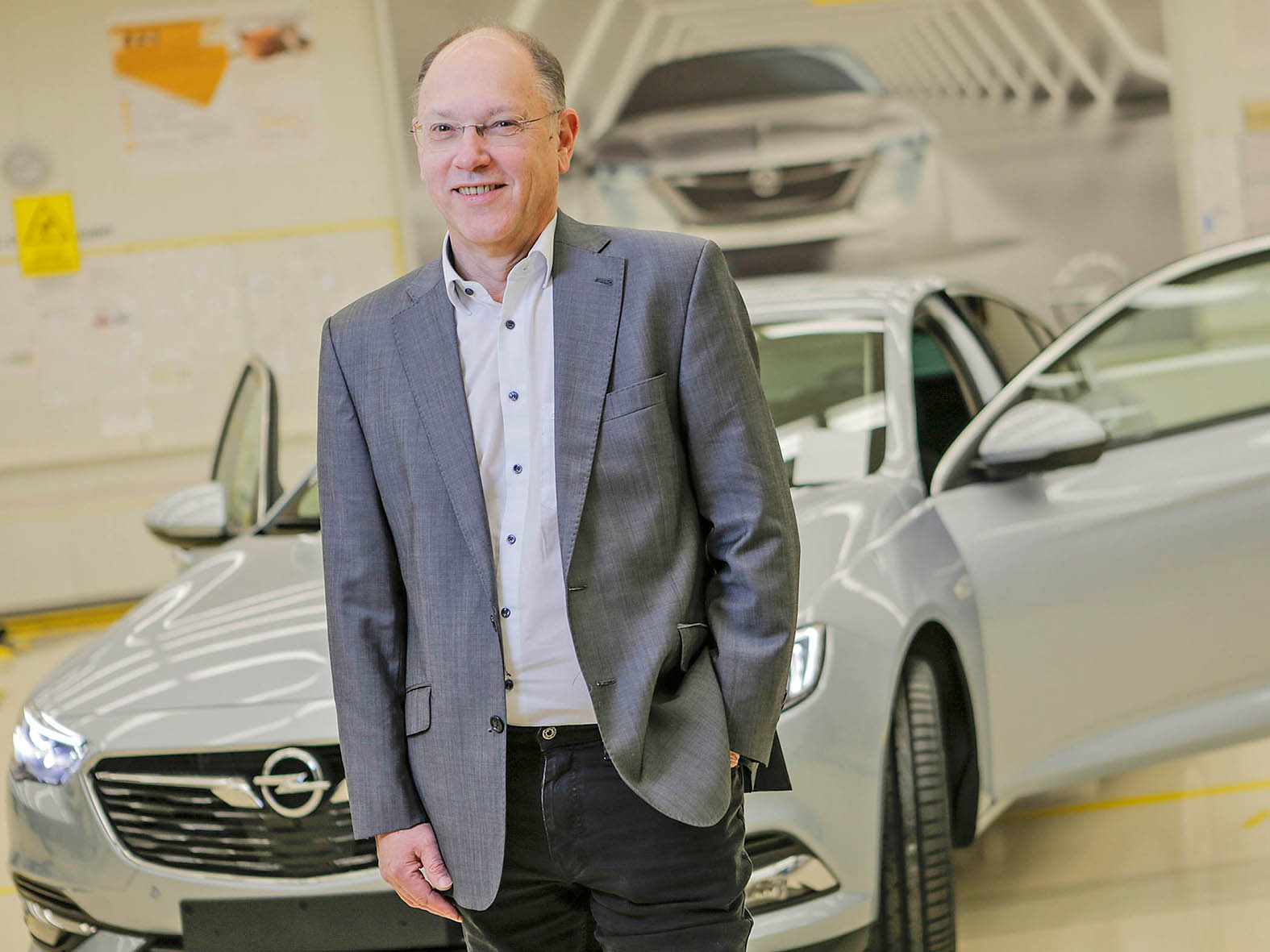
Werner Joeris
Performance Manager
Werner Joeris (60) works to define how the Insignia Grand Sport drives and how the driver feels when driving it. From the very beginning, the idea was to make this vehicle comfortable and dynamic. At the same time, it needed to fulfill the highest requirements in terms of security and fuel consumption. As the lead development engineer, Joeris has sent the new Insignia to the gym, so it lost up to 175 kilos in comparison to the previous model. He has also dealt intensively with the chassis, the assembly of parts, the set-up. This is not only noticeable when using the speed-dependent steering. The dampers prove to be extremely stiff, the gas intake is direct. The car scores by optimal road position, and the vehicle body itself has just a slight inclination, even with fast cornering. Joeris’ area of responsibility also includes engines, aerodynamics, vibrations, and noises. “We wanted to design the Insignia Grand Sport to make it really fun to drive.”
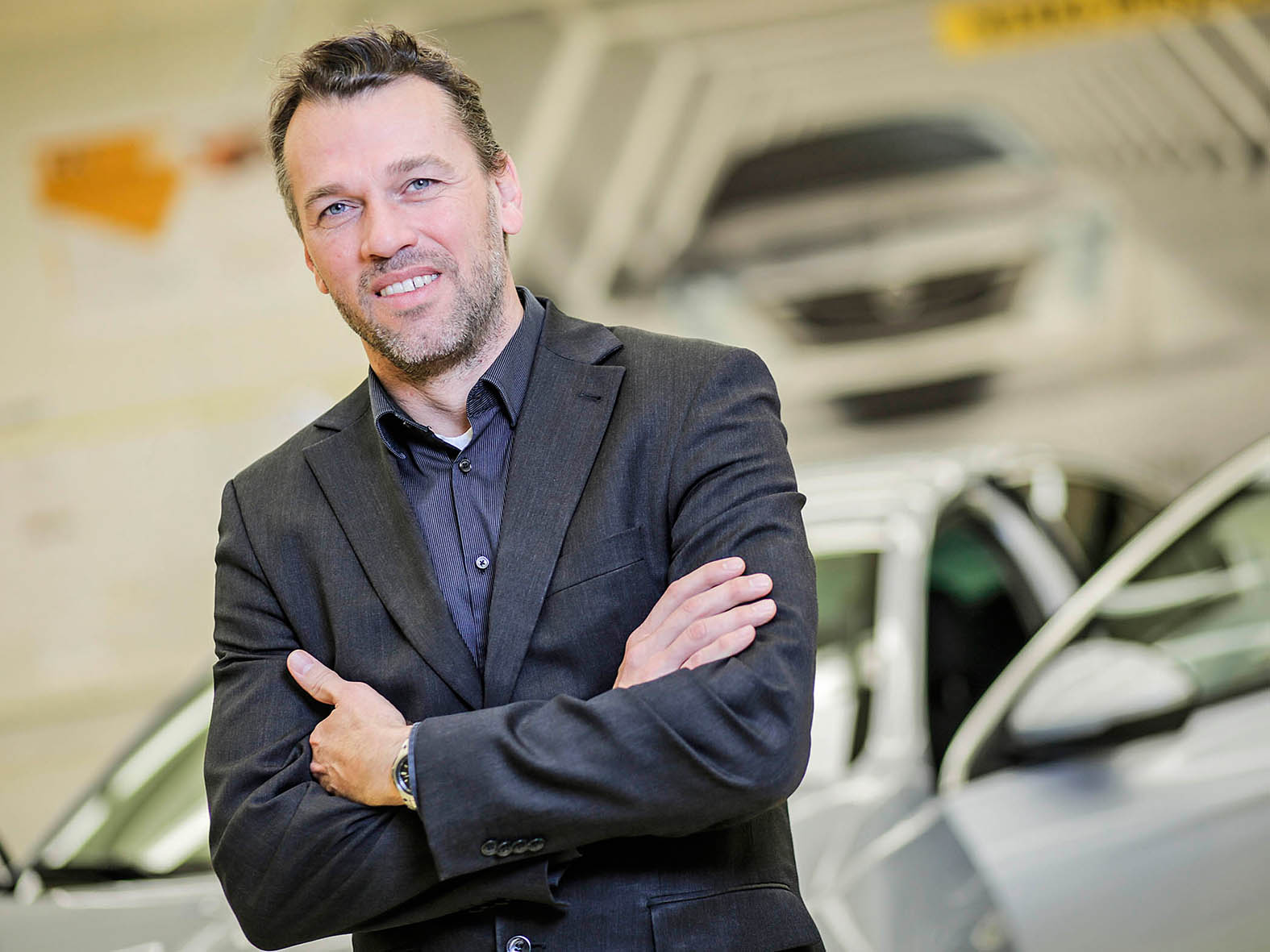
Thomas Eberhardt
Planning & Program Manager
Thomas Eberhardt (47) sees himself as the team’s consultant and moderator: “You could think of me as the oil in the transmission.” For example, he helps the Chief Engineer with cross-functional aspects such as the powertrain, finances, marketing, and, above all, ensuring quality. He also keeps the GM Group’s global strategy in mind, since Zipser’s team is still working on the new Insignia. “We also supervise the other models that are built on the same basis architecture.” Eberhardt finds the new light technology on the Opel version particularly exciting.
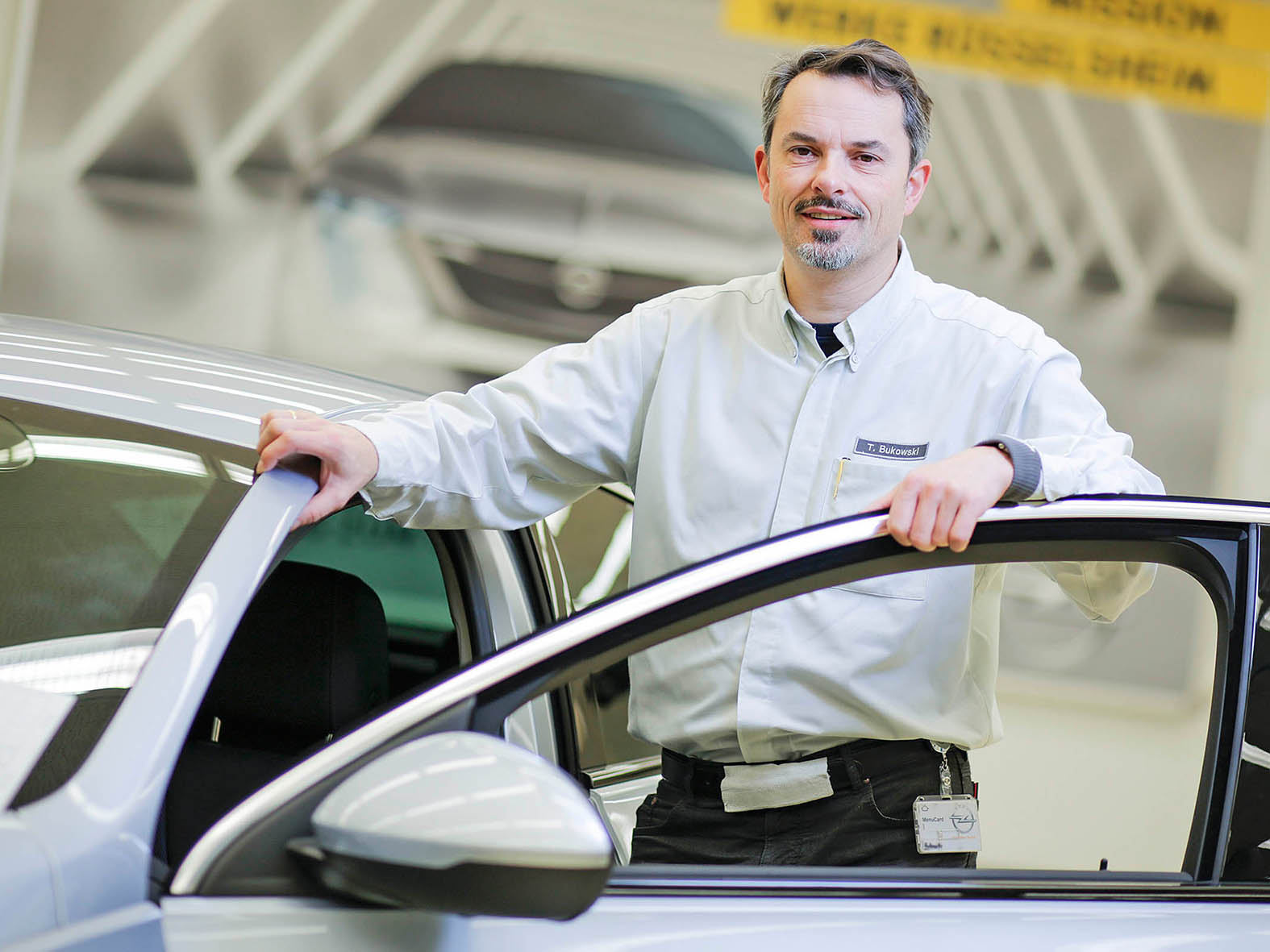
Thomas Bukowski
Launch Manager
Thomas Bukowski (51) is the man who brings the Insignia Grand Sport on the line. Together with his nine-member team, he has been involved in the project since precisely 100 weeks before the start of regular production (SORP). “Quality, timing, and the number of units are our parameters, and in that exact order,” says Bukowski. The greatest challenge, according to him, is the complexity of the task. The relevant figures provide some insight into this. The Grand Sport has around 1,500 parts numbers and nearly 2,000 more spot welds than the current Insignia model. This means that 300 new robots are required for the skeleton construction in the parent plant in Rüsselsheim alone. Bukowski’s team is coordinating the launch, from employee training through to logistics. During the start-up phase, the Team Leader particularly appreciated a certain detail on the vehicle: “The hood – the grill, headlights, and fenders all work so perfectly with one another.”
December 2016
